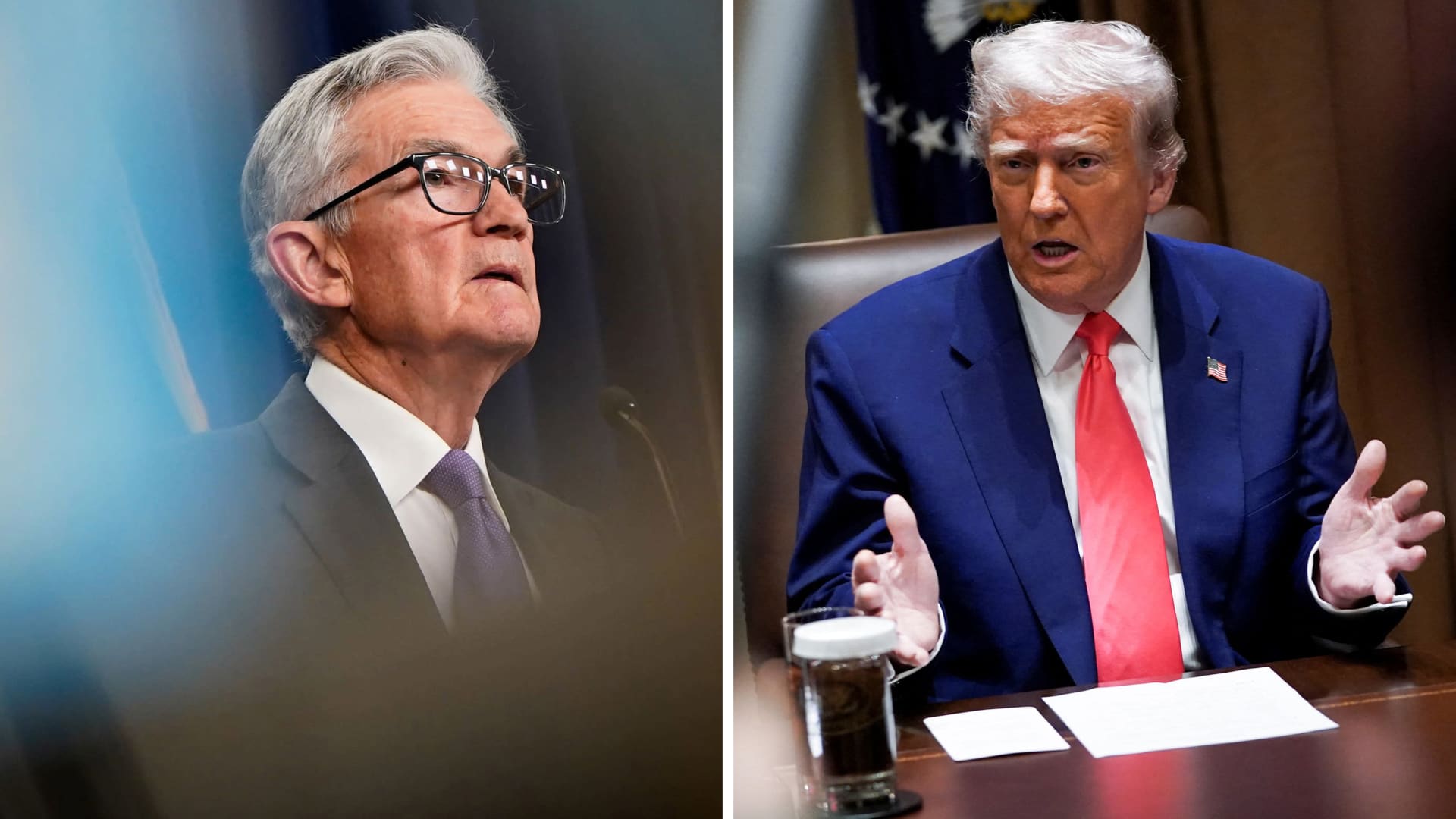The Trump-Powell Conflict: A Clash of Economic Visions and Institutional Autonomy
The relationship between a U.S. president and the Federal Reserve Chair is typically characterized by a delicate balance of respect and restraint. The Fed’s independence is a cornerstone of U.S. economic policy, designed to shield monetary decisions from short-term political pressures. However, the dynamic between President Donald Trump and Federal Reserve Chair Jerome Powell was anything but harmonious. Their conflict, marked by public clashes, escalating tensions, and unprecedented challenges to the Fed’s autonomy, revealed deep ideological divides and raised critical questions about the limits of presidential power in shaping economic policy.
The Roots of the Conflict: Interest Rates and Economic Philosophy
The friction between Trump and Powell began early in Trump’s presidency, centered on the Fed’s decision to raise interest rates. Trump, a vocal advocate for low interest rates, believed that higher rates stifled economic growth and made the U.S. less competitive globally. His perspective clashed with the Fed’s traditional approach of gradual rate hikes to curb inflation and maintain long-term stability. Unlike his predecessors, Trump did not shy away from publicly criticizing the Fed, using social media and rallies to voice his displeasure. This departure from precedent signaled a broader shift in how the executive branch engaged with the central bank.
Trump’s criticism was not merely about policy differences; it was personal. He saw Powell’s decisions as a direct challenge to his economic agenda, framing the Fed Chair as an obstacle to his vision of sustained growth. This perception fueled a series of escalating confrontations, including threats to remove Powell from his position—a move that would have been unprecedented and potentially destabilizing for financial markets.
The Escalation: Threats, Intimidation, and the Erosion of Trust
As the Fed continued raising rates, Trump’s rhetoric intensified. Reports suggested he explored the possibility of firing Powell, a move that would have tested the legal boundaries of presidential authority. While the Fed Chair serves a four-year term and can only be removed “for cause,” the mere suggestion of such action sent shockwaves through financial circles. The threat undermined Powell’s credibility and created uncertainty about the Fed’s independence, a pillar of U.S. economic governance.
Beyond direct threats, the Trump administration employed other tactics to pressure the Fed. Public statements questioned the Fed’s judgment, and internal disagreements within the Federal Open Market Committee (FOMC) were highlighted to sow doubt. The administration even scrutinized the Fed’s renovation project at its headquarters, framing it as evidence of Powell’s mismanagement. While concerns about government spending are valid, the focus on the renovation appeared to be more about undermining Powell than addressing fiscal responsibility.
The Renovation Controversy: A Distraction or a Calculated Attack?
The Fed’s renovation project became an unexpected battleground in the Trump-Powell conflict. The administration criticized the project’s cost and alleged mismanagement, portraying it as a symbol of Powell’s incompetence. This tactic was seen by many as an attempt to find a relatable issue that would resonate with the public and bolster the case for Powell’s removal. By focusing on a seemingly mundane matter, the administration sought to paint Powell as out of touch with the concerns of ordinary Americans.
However, the renovation controversy also highlighted a broader strategy: using any available pretext to weaken Powell’s position. The Fed’s independence relies on public trust, and by casting doubt on its leadership, the administration aimed to erode that trust. Whether the renovation was a genuine concern or a calculated distraction, the episode underscored the lengths to which the Trump administration was willing to go to exert influence over the Fed.
The Fed’s Response: Defending Independence Amid Political Pressure
Despite the relentless pressure, Jerome Powell and the Federal Reserve largely maintained their independence. The Fed’s eventual decision to lower interest rates was driven by economic data and global trade tensions, not by political pressure. Powell repeatedly emphasized that the Fed’s decisions were based on its dual mandate of price stability and full employment, not on political considerations. This steadfastness was a testament to the Fed’s institutional strength and the importance of its autonomy.
Had the Fed succumbed to political pressure, the consequences could have been severe. Premature rate cuts might have fueled inflation and undermined long-term economic stability. By staying true to its principles, the Fed preserved its credibility and demonstrated the value of an independent central bank. The episode served as a reminder that economic policy must be guided by sound principles, not political expediency.
The Broader Implications: Presidential Power and Economic Policy
The Trump-Powell conflict raised fundamental questions about the balance of power between the executive branch and the Federal Reserve. It highlighted the potential for a president to exert undue influence over monetary policy, even without direct control. The episode also underscored the risks of a president pursuing short-term economic gains at the expense of long-term stability. Trump’s focus on immediate growth contrasted sharply with the Fed’s more cautious, data-driven approach.
The experience highlighted the need for a more balanced and sustainable approach to economic policy, one that considers both immediate needs and long-term risks. It also reinforced the importance of preserving the Fed’s independence, ensuring that monetary policy decisions are based on economic principles rather than political considerations.
Conclusion: A Lesson in Institutional Resilience
The conflict between Trump and Powell was a stress test for the U.S. financial system. It challenged the Fed’s independence, raised questions about presidential power, and highlighted the potential risks of politically motivated monetary policy. While the Fed ultimately weathered the storm, the episode served as a stark reminder of the importance of preserving the central bank’s autonomy. The legacy of this conflict will likely shape the relationship between future presidents and Fed Chairs, underscoring the need for mutual respect, open communication, and a shared commitment to economic stability. In the end, the Fed’s resilience in the face of political pressure reaffirmed its role as a bulwark against short-termism, ensuring that economic policy remains grounded in sound principles rather than political whims.

